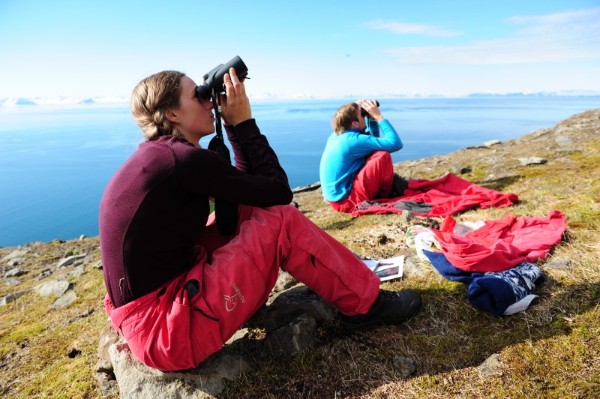Methods for calculating population sizes
Our calculations of seabird population sizes are based on data from the mapping of birds in the breeding season. We count the number of breeding pairs at a given breeding site and sum up the numbers for large areas. This type of mapping is demanding, and we normally only conduct it once per decade. Therefore, we use data from the nearest monitoring sites to adjust and update the population sizes for every breeding locality.

Photo: Sébastien Descamps
We apply several methods for bird counting, but in many cases, we simply count the individuals we observe in the field, one by one. However, large aggregations of birds must necessarily be counted in other ways, for example by measuring the area they cover and calculate the bird density in a defined field of view – whether it is in a bird cliff or on the open sea. In other instances, we photograph large flocks of birds and count the number of birds or nests in the photos later.
Read more about how we monitor population development on the key sites and how we conduct mapping along the coast and mapping on the open sea.